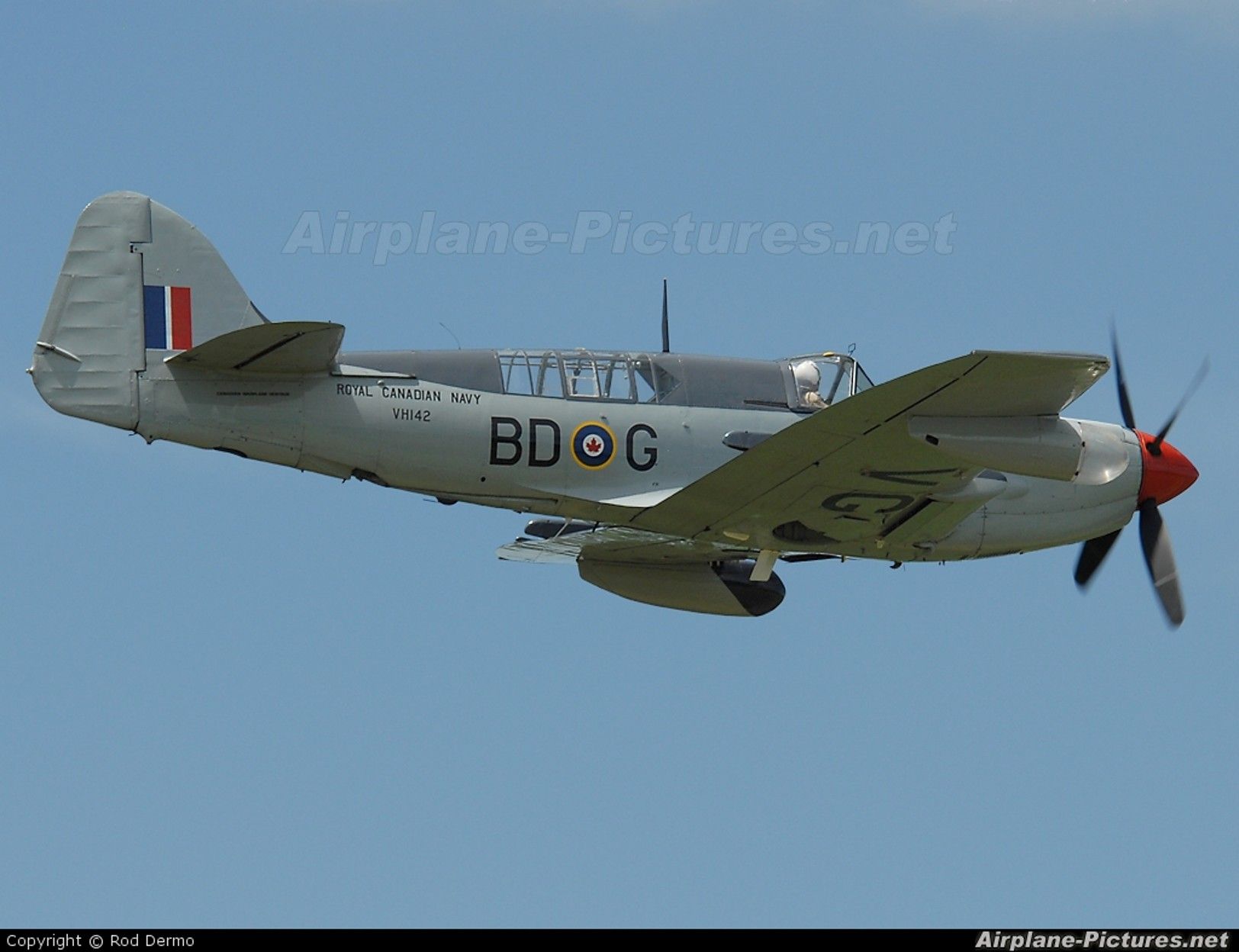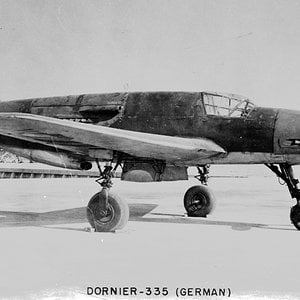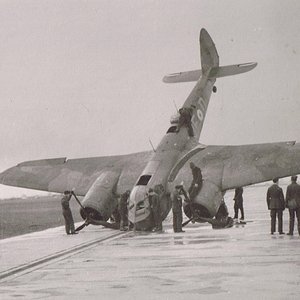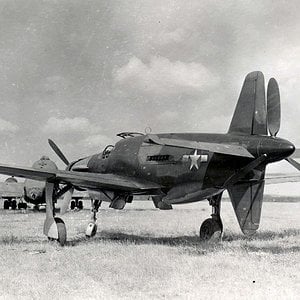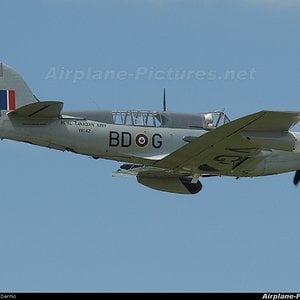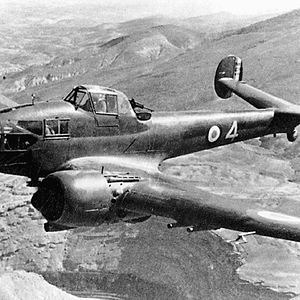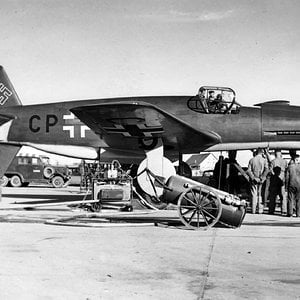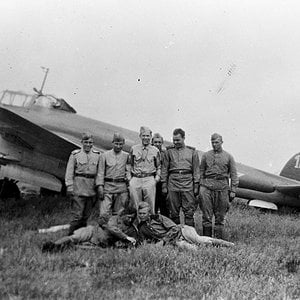Navigation
Install the app
How to install the app on iOS
Follow along with the video below to see how to install our site as a web app on your home screen.
Note: This feature may not be available in some browsers.
More options
You are using an out of date browser. It may not display this or other websites correctly.
You should upgrade or use an alternative browser.
You should upgrade or use an alternative browser.
Design and development
Before the war, in 1938 the Air Ministry issued two specifications for two naval fighters, a conventional and a "turret fighter". Performance for both was to be 275 knots at 15,000 ft while carrying an armament, for the conventional fighter, of eight 0.303 Browning machine guns or four 20mm Hispano cannon. This would replace the Fulmar which had been an interim design. These specifications were updated the following year and several British manufacturers tendered their ideas. Further changes to the official specification followed, the turret fighter specification was dropped and a modified specification issued to cover single and dual seat fighters capable of 330 and 300 knots respectively. Fairey offering designs that could be single or two seater and powered by the Rolls Royce Griffon or alternatively a larger airframe with a Napier Sabre. After consideration of manufacturers responses, Specification N.5/40 replaced the earlier specifications. Due to the necessity of navigating over open sea, it was for a two-seater alone.[1] For defence of naval bases a separate single seater design would lead to the Blackburn Firebrand.[2]
The Firefly was designed by H.E. Chaplin at Fairey Aviation; in June 1940, the Admiralty ordered 200 aircraft "off the drawing board" with the first three to be the prototypes. The prototype of the Firefly flew on 22 December 1941.[3] Although it was 4,000 lb (1,810 kg) heavier than the Fulmar (largely due to its armament of two 20 mm Hispano cannon in each wing), the Firefly was 40 mph (60 km/h) faster due to improved aerodynamics and a more powerful engine, the 1,735 hp (1,294 kW) Rolls-Royce Griffon IIB.
The Firefly is a low-wing cantilever monoplane with oval-section metal semi-monocoque fuselage and conventional tail unit with forward-placed tailplane. Powered by a Rolls-Royce Griffon liquid-cooled piston engine with a three-blade airscrew. The Firefly had retractable main landing gear and tail wheel, with the hydraulically-operated main landing gear retracting inwards into the underside of the wing centre-section. The aircraft also had a retractable arrester hook under the rear fuselage. The pilot's cockpit was over the leading edge of the wing and the observer/radio-operator/navigator aft of the wing trailing edge - positions which gave better visibility for operating and landing. Both crew had separate jettisonable canopies. The all-metal wing could be folded manually, with the wings ending up along the sides of the fuselage. When in the flying position, the wings were hydraulically locked.[4]
Handling and performance trials were first undertaken at Boscombe Down in 1942; by 1944 the Firefly was cleared to use underwing rocket projectiles and by April 1944 tests with a double underwing load of 16 rockets and two 45 gallon (205 l) drop tanks still provided acceptable handling.[5] Further testing with two 90 gallon (410 l) drop tanks or two 1,000 lb (454 kg) bombs showed acceptable handling, albeit with "...a small adverse effect on handling..." while "...handling with a single 1,000 lb (454 kg) bomb was unpleasant, but manageable."[5] Performance trials at 11,830 lb (5,366 kg) indicated a maximum speed of 315 mph (508 km/h) at 16,800 ft (5,121 m); a climb to 20,000 ft (6,096 m) took 12.4 minutes, with a maximum climb rate of 2,140 fpm (10.87 m/s) at 3,800 ft (1,158 m), and a service ceiling of 30,100 ft (9,174 m).[6]
Before the war, in 1938 the Air Ministry issued two specifications for two naval fighters, a conventional and a "turret fighter". Performance for both was to be 275 knots at 15,000 ft while carrying an armament, for the conventional fighter, of eight 0.303 Browning machine guns or four 20mm Hispano cannon. This would replace the Fulmar which had been an interim design. These specifications were updated the following year and several British manufacturers tendered their ideas. Further changes to the official specification followed, the turret fighter specification was dropped and a modified specification issued to cover single and dual seat fighters capable of 330 and 300 knots respectively. Fairey offering designs that could be single or two seater and powered by the Rolls Royce Griffon or alternatively a larger airframe with a Napier Sabre. After consideration of manufacturers responses, Specification N.5/40 replaced the earlier specifications. Due to the necessity of navigating over open sea, it was for a two-seater alone.[1] For defence of naval bases a separate single seater design would lead to the Blackburn Firebrand.[2]
The Firefly was designed by H.E. Chaplin at Fairey Aviation; in June 1940, the Admiralty ordered 200 aircraft "off the drawing board" with the first three to be the prototypes. The prototype of the Firefly flew on 22 December 1941.[3] Although it was 4,000 lb (1,810 kg) heavier than the Fulmar (largely due to its armament of two 20 mm Hispano cannon in each wing), the Firefly was 40 mph (60 km/h) faster due to improved aerodynamics and a more powerful engine, the 1,735 hp (1,294 kW) Rolls-Royce Griffon IIB.
The Firefly is a low-wing cantilever monoplane with oval-section metal semi-monocoque fuselage and conventional tail unit with forward-placed tailplane. Powered by a Rolls-Royce Griffon liquid-cooled piston engine with a three-blade airscrew. The Firefly had retractable main landing gear and tail wheel, with the hydraulically-operated main landing gear retracting inwards into the underside of the wing centre-section. The aircraft also had a retractable arrester hook under the rear fuselage. The pilot's cockpit was over the leading edge of the wing and the observer/radio-operator/navigator aft of the wing trailing edge - positions which gave better visibility for operating and landing. Both crew had separate jettisonable canopies. The all-metal wing could be folded manually, with the wings ending up along the sides of the fuselage. When in the flying position, the wings were hydraulically locked.[4]
Handling and performance trials were first undertaken at Boscombe Down in 1942; by 1944 the Firefly was cleared to use underwing rocket projectiles and by April 1944 tests with a double underwing load of 16 rockets and two 45 gallon (205 l) drop tanks still provided acceptable handling.[5] Further testing with two 90 gallon (410 l) drop tanks or two 1,000 lb (454 kg) bombs showed acceptable handling, albeit with "...a small adverse effect on handling..." while "...handling with a single 1,000 lb (454 kg) bomb was unpleasant, but manageable."[5] Performance trials at 11,830 lb (5,366 kg) indicated a maximum speed of 315 mph (508 km/h) at 16,800 ft (5,121 m); a climb to 20,000 ft (6,096 m) took 12.4 minutes, with a maximum climb rate of 2,140 fpm (10.87 m/s) at 3,800 ft (1,158 m), and a service ceiling of 30,100 ft (9,174 m).[6]

